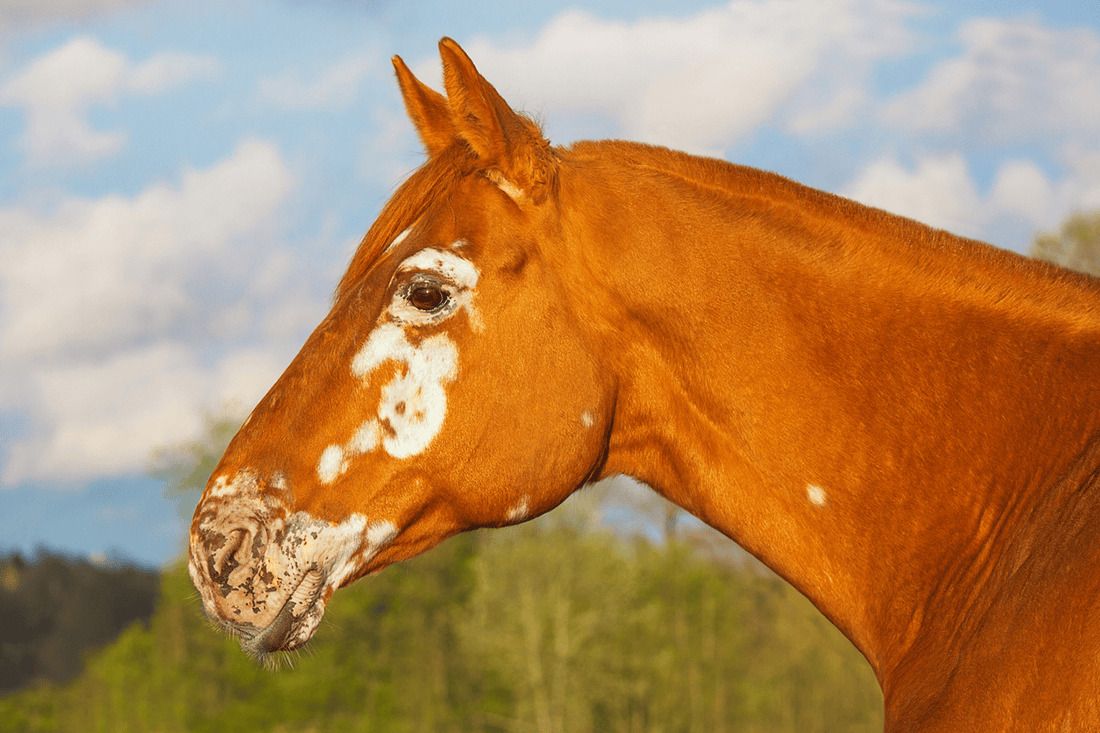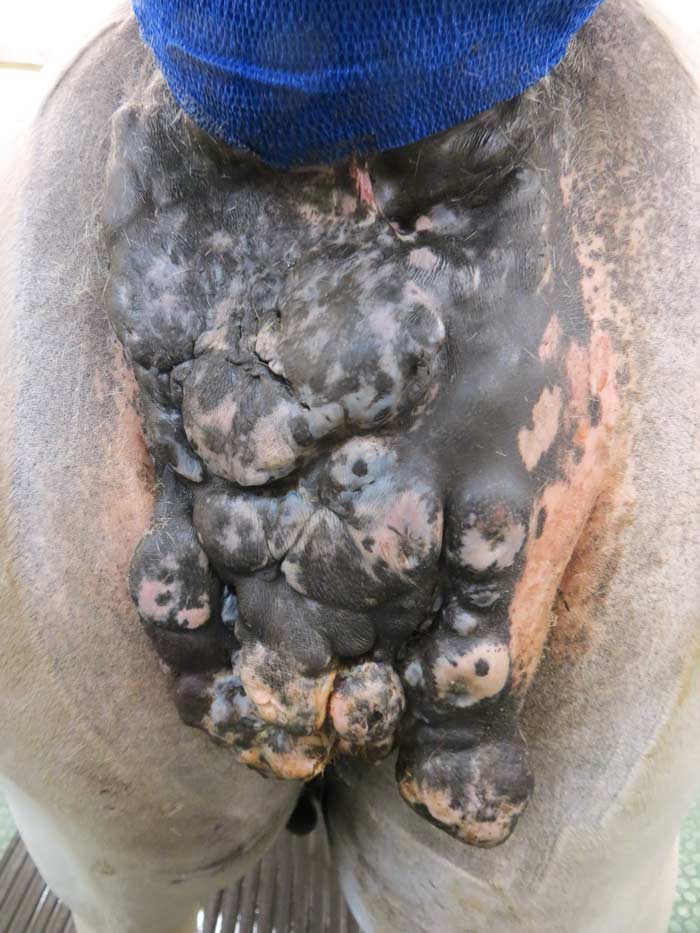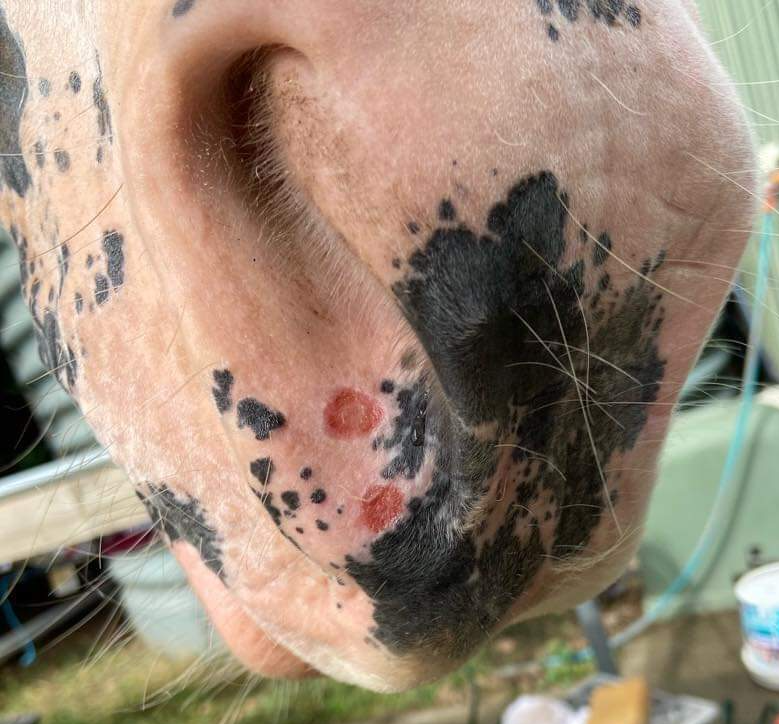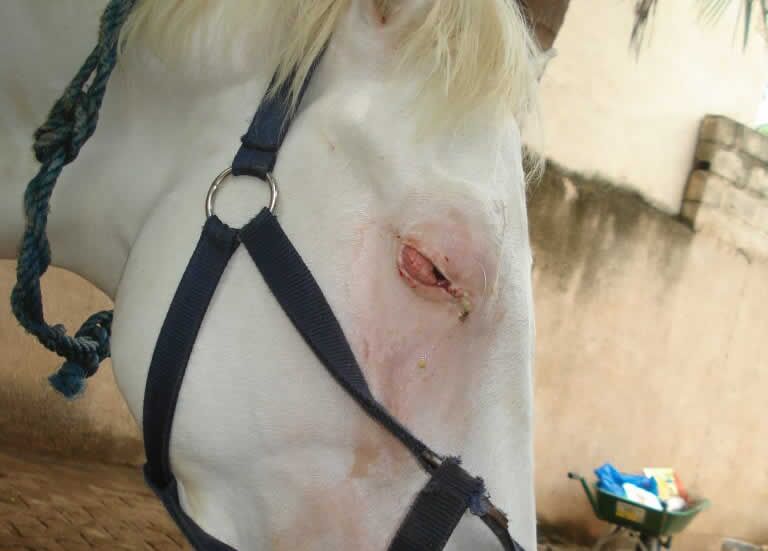Recognizing Skin Cancer in Light-Colored Horses

Skin cancer is a significant health concern for horses, especially those with light-colored coats. These horses are more susceptible due to their lighter pigmentation, which offers less natural protection against harmful ultraviolet (UV) rays. Early recognition and treatment are crucial for improving outcomes and ensuring the well-being of affected horses.
Why Are Light-Colored Horses More at Risk?

Light-colored horses, such as those with white, gray, or cream coats, have less melanin in their skin. Melanin acts as a natural barrier against UV radiation, so horses with less pigmentation are more vulnerable to skin damage that can lead to cancerous changes.
Common Types of Skin Cancer in Horses

| Type of Skin Cancer | Description | Common Locations | Appearance |
|---|---|---|---|
| Squamous Cell Carcinoma (SCC) | Most common equine skin cancer, aggressive but treatable if caught early | Eyes, eyelids, genitalia, muzzle | Ulcerated, crusty lesions or masses |
| Melanoma | Often found in gray horses, usually benign but can become malignant | Under tail, around anus, lips, and parotid gland | Dark, raised nodules or lumps |
| Sarcoids | Non-metastatic tumors caused by bovine papillomavirus | Head, legs, chest, abdomen | Wart-like growths, can be flat or raised |
Recognizing Early Signs of Skin Cancer
- Persistent sores or ulcers that do not heal
- Raised lumps or nodules on the skin
- Crusty or scaly patches
- Swelling or thickening of the skin
- Changes in color or texture of the skin
Diagnostic Methods
- Physical Examination: Visual and tactile inspection by a veterinarian
- Biopsy: Taking a small tissue sample for laboratory analysis
- Imaging: Ultrasound or radiographs to assess the extent of the tumor
Treatment Options
- Surgical removal of tumors
- Cryotherapy (freezing abnormal cells)
- Laser therapy
- Chemotherapy or immunotherapy in advanced cases
Prevention Tips
- Provide shade and limit sun exposure during peak UV hours
- Use UV-protective fly masks and sheets
- Regularly inspect your horse’s skin for any abnormalities
- Maintain good overall health and nutrition
FAQ
Q1: Can skin cancer in horses be cured?
A: Many cases can be successfully treated if detected early, especially squamous cell carcinoma.
Q2: Are certain breeds more prone to skin cancer?
A: Yes, breeds with lighter coats or gray coloring are at higher risk.
Q3: How often should I check my horse for skin issues?
A: Regular monthly checks are recommended, with more frequent inspections during sunny months.
Q4: Is skin cancer painful for horses?
A: It can be, especially if lesions become ulcerated or infected.
Recognizing skin cancer early in light-colored horses is vital for effective treatment and maintaining their quality of life. By understanding the risks, signs, and preventive measures, horse owners can better protect their animals from this serious condition.
